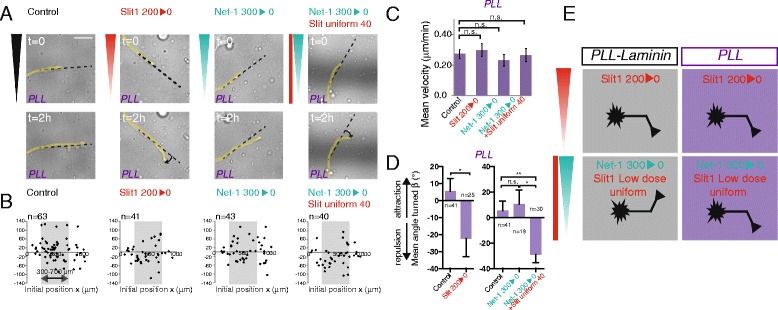Figure 5.

Slit1 triggers Netrin-1 repulsion for hippocampal neurons on PLL-coated substrate. (A) Last brighfield images of typical growing axons on PLL-coated microwells. The growing neurite (yellow line), the initial orientation (dark dotted line), and the angle turned (rotating arrow) are shown. Bar, 20 μm. (B) Scatter plot of the angle turned versus the initial position (x). (C) The mean velocity (±SEM). n.s.: P > 0.05, Mann–Whitney test in which each condition is compared to the control. (D) The mean angle turned (β) (±SEM) for axons in the different conditions, for initial positions between 300 and 700 μm. Statistical differences are indicated *P < 0.05, Kruskal Wallis test with Dunn’s correction. (E) Schema showing the responses of hippocampal neurons to different stimulations depending on the nature of substrate coating. On PLL and PLL-laminin-coated microwells, hippocampal neurons are repelled by a Slit1 gradient at high concentration. When submitted to the combination of a Netrin-1 gradient with a low uniform concentration of Slit1, the response of hippocampal growth cones is shifted from repulsion on PLL-coated substrate to an attraction on PLL-laminin-coated substrates.
